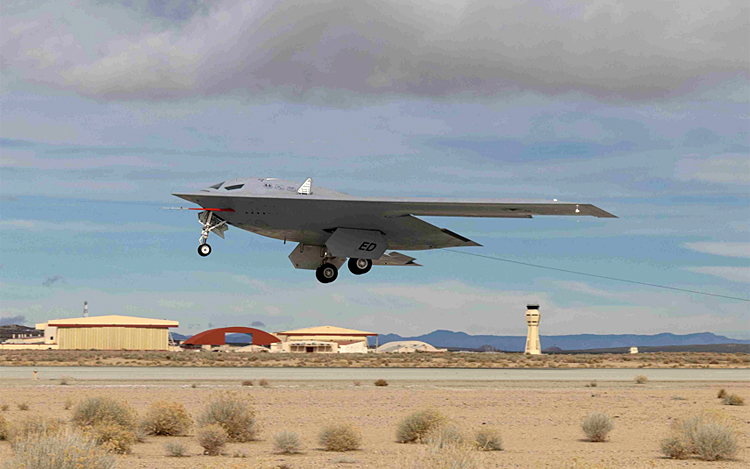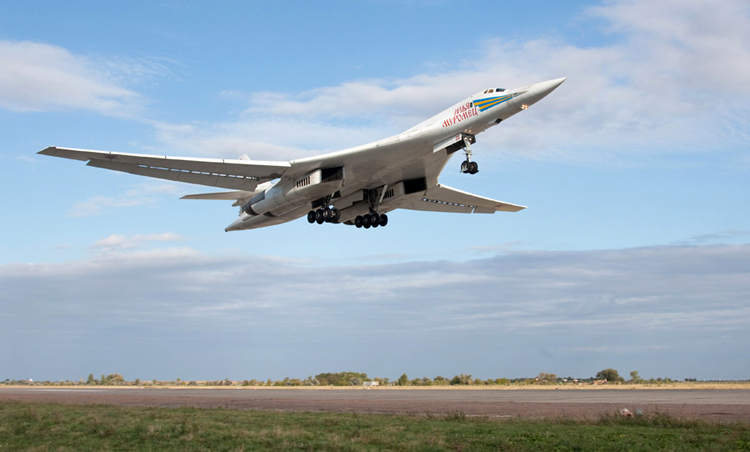INDIAN ARMED FORCES CHIEFS ON OUR RELENTLESS AND FOCUSED PUBLISHING EFFORTS

The insightful articles, inspiring narrations and analytical perspectives presented by the Editorial Team, establish an alluring connect with the reader. My compliments and best wishes to SP Guide Publications.

"Over the past 60 years, the growth of SP Guide Publications has mirrored the rising stature of Indian Navy. Its well-researched and informative magazines on Defence and Aerospace sector have served to shape an educated opinion of our military personnel, policy makers and the public alike. I wish SP's Publication team continued success, fair winds and following seas in all future endeavour!"

Since, its inception in 1964, SP Guide Publications has consistently demonstrated commitment to high-quality journalism in the aerospace and defence sectors, earning a well-deserved reputation as Asia's largest media house in this domain. I wish SP Guide Publications continued success in its pursuit of excellence.
- Operation Sindoor: Resolute yet Restrained
- India’s Operation Sindoor Sends a Clear Message to Terror and the World – ‘ZERO TOLERANCE’
- Japan and India set forth a defence cooperation consultancy framework, talks on tank and jet engines
- Terrorist Attack in Pahalgam in Kashmir: Unfolding a long surgical war against PAK
- Lt General Pratik Sharma takes over Command of Indian Army's Northern Command
India's Long-Range Stealth Bomber
With its projected 12,000-km combat radius, the bomber will enable India to conduct strikes deep into Europe, Africa, Pacific and the Arctic, enhancing deterrence not just against regional adversaries like China and Pakistan, but also against distant strategic threats
 |
The Author is Former Director General of Information Systems and A Special Forces Veteran, Indian Army |

According to news reports of July 19, 2025, India is developing a stealth bomber, called 'Ultra Long-Range Strike Aircraft' (ULRSA), that would match with America's B-21 'Raider' and Russia's Tu-160 'White Swan' long-range bombers, integrating stealth design, high subsonic speed, and massive payload capacity into a single potent platform. The ULRSA project is reportedly being pursued under a classified long-term programme by the Ministry of Defence (MoD) to provide the IAF with deep-penetration capabilities, nuclear strike reach, and conventional bombing roles, matching the capabilities of the world's foremost strategic bombers.
According to early design assessments, as reported in the media, the ULRSA will carry a maximum payload of 12 tonnes, including four BrahMos-NG supersonic cruise missiles lighter, stealthier variant of the original supersonic missile, with an expected range between 290 to 450 km, advanced short-range ballistic missiles like the Agni-1P, precision-guided munitions (PGMs), anti-radiation missiles, and gravity bombs, making it a dual-role strategic bomber capable of both nuclear and conventional warfare. The ULRSA will incorporate radar-absorbent materials, an internal weapons bay, and reduced heat and radar signature, designed to survive dense, layered air defence environments. Integration of BrahMos-NG with the internal bay of the ULRSA would enable the IAF to conduct rapid, stealthy, deep-strike missions against high-value targets, like command centres, naval strike groups, and hardened air defence nodes. Also, inclusion of anti-radiation and guided munitions in the payload mix would enable Suppression of Enemy Air Defences (SEAD) missions during wartime.
The 'Ultra Long-Range Strike Aircraft' (ULRSA) project is reportedly being pursued to provide the IAF with deep-penetration capabilities, nuclear strike reach, and conventional bombing roles, matching the capabilities of the world's foremost strategic bombers.
The aircraft is expected to use a swing-wing geometry similar to the Russian Tu-160 bomber to balance aerodynamic efficiency during take-off and cruise with the speed and agility needed during penetration missions, providing better fuel economy and tactical versatility. With its projected 12,000-km combat radius, the bomber will enable India to conduct strikes deep into Europe, Africa, Pacific and the Arctic, enhancing deterrence not just against regional adversaries like China and Pakistan, but also against distant strategic threats. This capability will place the IAF into the elite club of global powers, like the US, Russia and China that maintain intercontinental-range bombers.
According the news report, a senior IAF officer told media, "Modern warfare has moved beyond the constraints of geography," a senior IAF official told domestic media, adding that, "We cover land and sea within the nuclear triad, but we need an air platform capable of carrying out strikes anywhere in the world." He also noted that the growing strategic bomber capabilities of China, particularly the H-20 stealth bomber in advanced development, and America's rapid deployment of the B-21 Raider, demand a corresponding Indian response.
With the Defence Research and Development Organisation (DRDO) spearheading the feasibility studies, the programme has reportedly moved into the conceptual and preliminary design phases, with an ambitious target of fielding a prototype by 2035.
The MoD is reportedly engaging Russia and France to facilitate technology transfer that could accelerate development and offset technical challenges. Russia, with its extensive experience in building the Tu-160, the world's fastest and heaviest supersonic strategic bomber with a top speed of Mach 2.05, a range of 12,300 km, and a payload exceeding 40 tonnes, is seen as a key design and propulsion partner. France is being approached for contributions in avionics, stealth materials, and mission systems, leveraging their work on the Rafale and the future FCAS sixth-generation fighter programme. For propulsion, adapting the Russian NK-32 afterburning turbojet of the Tu-160, or modifying the US GE F414 turbofan engine is being examined.

With the Defence Research and Development Organisation (DRDO) spearheading the feasibility studies, the programme has reportedly moved into the conceptual and preliminary design phases, with an ambitious target of fielding a prototype by 2035. But this is certainly not going to be easy because transfer of foreign technology requires complex licensing and is fraught with geopolitical alignment, France continues to be shy of transferring technology to India. In addition, India and the US have an agreement under the iCET (Initiative on Critical and Emerging Technologies) framework, but even the 100 per cent transfer of technology (ToT) of the GE F404 aero engine is not being done despite announcements to the effect.
The IAF views the ULRSA as a central node in India's "nuclear triad," delivering credible second-strike capability even if land-based and sea-based assets are compromised
What percentage of the ULRSA will be indigenous content is not known. However, one view is that it could well be a Tu-160 MKI; a Tu-160, fitted with Indian and Western Avionics and sensor suite, and an internal carousel designed to carry BrahMos and Indian weapons. The logic is that India wouldn't have the budget to develop the ULRSA from a scratch including the standalone engine, the dry thrust of which is greater than the wet thrust of the highest grade of engine India is contemplating. Moreover, by 2035 India's Ghatak UCAV (designed as a stealth bomber) would have matured, the AMCA would be up (prototype/trial phase), and the indigenous aero engine developed – all adding up to the learning required to develop the ULRSA, or the advanced version of the Tu-160 designed to meet requirements of India's long-range stealth bomber.
The IAF views the ULRSA as a central node in India's "nuclear triad," delivering credible second-strike capability even if land-based and sea-based assets are compromised. The project aims to strengthen India's Minimum Credible Deterrence posture under its No First Use policy, while increasing flexibility in deployment options and survivability of its strategic assets. With the ULRSA, India's ability to conduct intercontinental strikes would certainly be a decisive factor in maintaining regional balance. It would transform the IAF into a true global power projection force.





